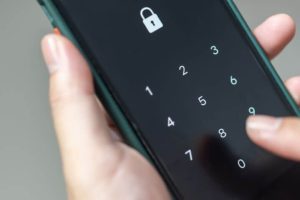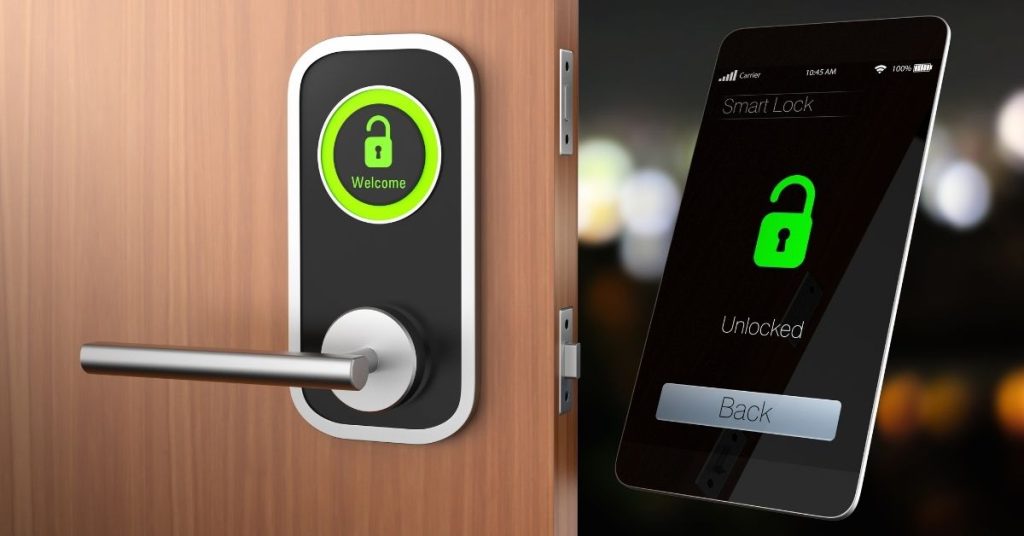Smart locks have several features, and benefits, and are equipped with one of the most important aspects of the modern world: convenience. As such, this piece of technology has quickly become a popular choice among homeowners. Being able to use mobile devices to control your steel or fiberglass entry door remotely, as well as monitor your home’s front door status is worth its while. Not only is it convenient, it adds a measure of security – providing homeowners with peace of mind every time they leave their homes. However, there are many smart lock limitations worth knowing.
What are Smart Lock Limitations?
It’s almost certain that smart technology is our future. With smartphones, and smart homes, the possibilities are endless. Smart locks are just one of the many inventions made recently, and there are so many yet to come. And while that may seem enticing, it would be unwise to ignore the fact that each new piece of tech comes with its own set of limitations.

Reliance on Electricity
A device’s reliance on any one thing makes it vulnerable to possible threats. In this case, smart locks are reliant on electricity. This means that any time the power in your home goes off you’re left vulnerable to many things. For example, your front door can be left unlocked. Or, your smart lock can malfunction. While most systems have a backup battery, you still wouldn’t want to risk your valuables to the chance of system failure. Some smart locks have keyholes for such instances, but not all of them offer that option.
Reliance on Wireless Network
No matter what type of smart lock you have (Bluetooth, Wi-Fi, or Z-Wave lock), you may be faced with the same risk of losing connection. While the probability of that happening is low, you still need a backup plan in case.
Costs (Time & Money)
Smart locks can be expensive as well as time-consuming. Moreover, there are a plethora of smart lock options available on the market. This means not only will you have quite a few products to go through, you’ll have to make time to research and read up on reviews before coming to a decision. To make things more complicated, you may not find a suitable smart lock from the brand you choose due to compatibility issues – which we will discuss a little further in this article.
However, the biggest reason people tend to stay away from smart locks is their price. A regular entry door lock may cost you from $50 to $500. The smart locks could easily cost you thousands of dollars with their pricey kit and complicated installation process. You may end up spending more money attempting to fix a smart lock malfunction as well.

Vulnerability to Hackers
Another massive vulnerability that smart locks fall victim to is hacking. Hackers, if they wanted to, could override the smart lock system and gain entry to your home. Or they could target weak digital security protocols on the lock to access your network. Either way, it creates severe security issues. So, when you consider buying a smart lock, it’s essential you look into the security and anti-hacking features, as this may be the largest smart lock limitation.
Possibility of Malfunction
Malfunctions are common – however, they don’t normally cause disruptions that wake you in the middle of the night. If the door sensor of a smart lock is too sensitive, however – it’ll blare an alarm, definitely disturbing your normal or nightly routine. For those instances, you’ll have to spend time learning and educating those who live with you on the device’s management and system.
Can You Use a Smart Lock on a 3-Point Lock Door?
Most smart locks only work with deadbolts. So, if you use a 3-point lock door, you might find it difficult to locate a compatible smart lock to install. If you really want to use a smart multi-point lock, you may need to customize the lock or the door. Either way, this smart lock limitation is a costly alternative.
Considering User Experience and Accessibility
It’s important to consider the user experience and accessibility aspects of smart locks. Not all users are tech-savvy, and the complexity of operating smart locks can be a significant barrier for some, particularly the elderly or those not accustomed to smart technology. Ensuring that smart locks are intuitive and user-friendly is crucial, but some models may fall short of providing a seamless experience. This can lead to frustration or, in worse cases, lockouts if users struggle to operate the system effectively. When evaluating smart locks, potential buyers should consider not just the technological prowess and security features, but also how accessible and manageable the system will be for everyone accessing the lock.

Integration with Home Ecosystems
A significant smart lock limitation that often goes overlooked is the challenge of integrating smart locks seamlessly with existing home automation systems. As the smart home ecosystem becomes increasingly complex, with various devices and platforms needing to communicate effectively, compatibility issues can arise. Smart locks may work flawlessly as standalone units but could encounter connectivity or compatibility problems when attempting to integrate with other smart home devices, such as voice assistants, security systems, or even other smart locks. This can limit the functionality and convenience expected from a fully integrated smart home setup. Homeowners should meticulously research and ensure that their chosen smart lock is compatible with their current smart home devices to avoid these issues, ensuring a cohesive and functional smart home environment.
Contact Us
If you want to enjoy the convenience that smart locks bring to your life, that’s perfectly fine. Just be aware of the limitations they hold. On a positive note, smart locks will continue to evolve as technology continues to evolve – becoming more secure and risk-free as time passes. Of course, instead of spending all that time researching smart lock options, you could always have a consultation with experts in that industry. Contact our team of professionals at ALDA Windows and Doors can help you find an ideal smart lock that will easily integrate into your daily routine.

